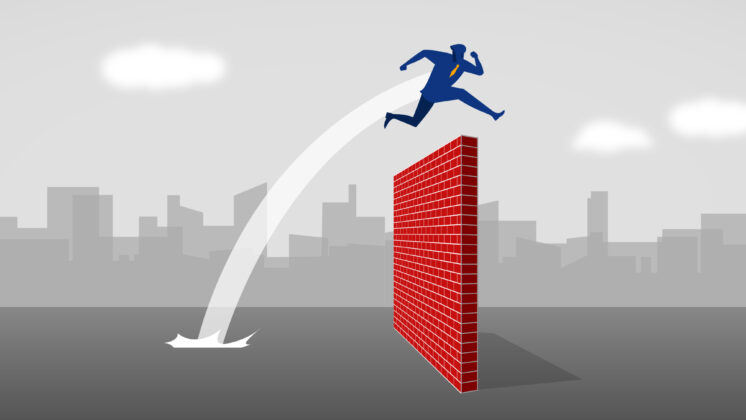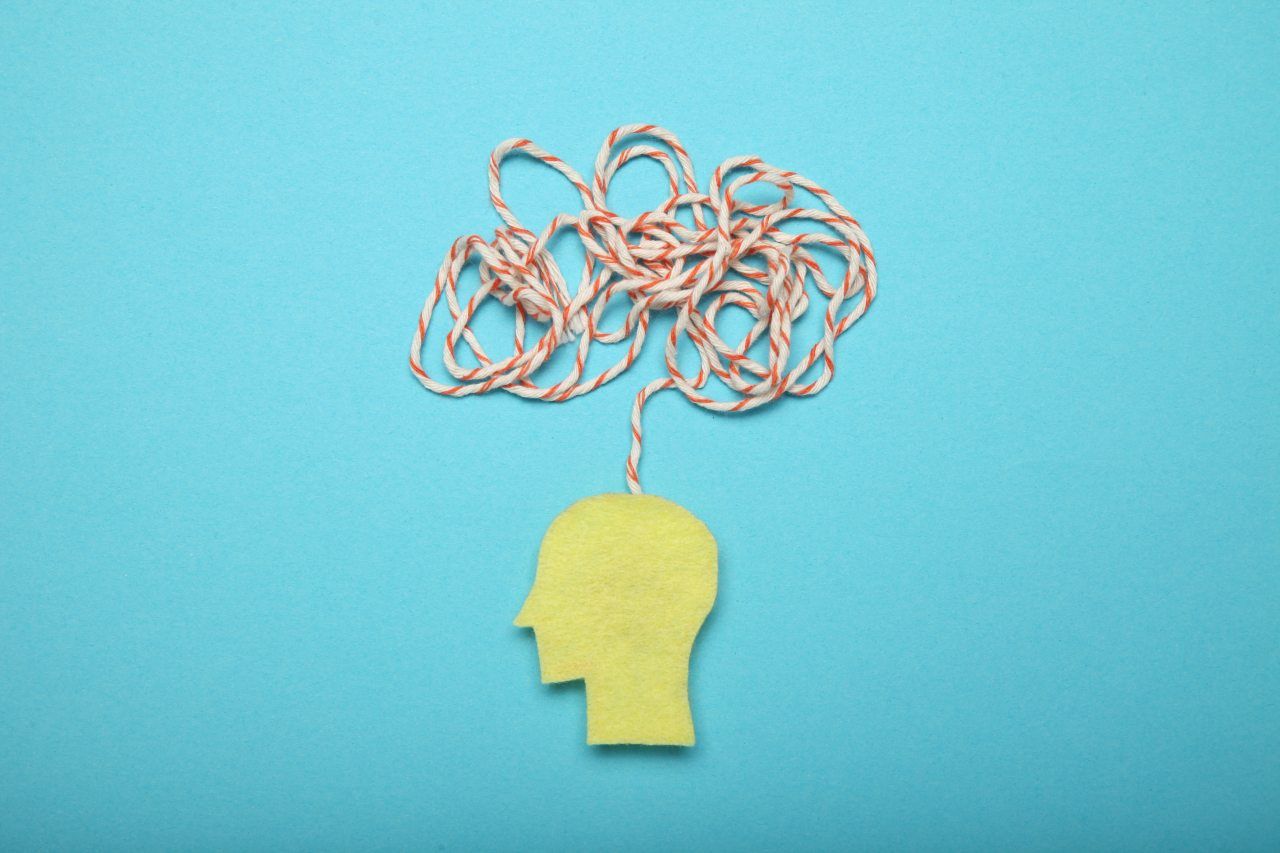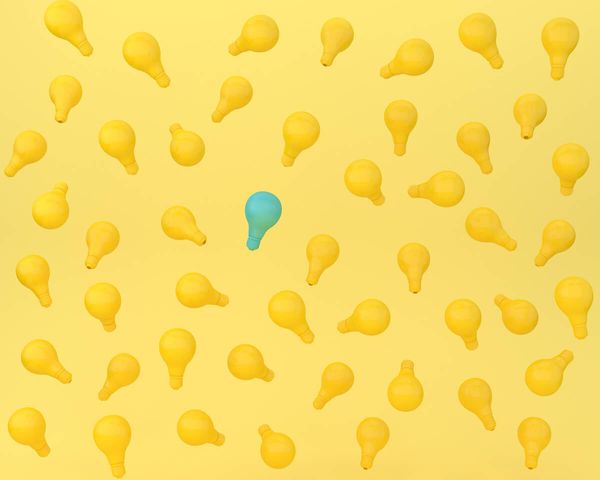Overcoming Obstacles to Critical Thinking
The ability to think critically will benefit students throughout their lives. Here are a few tips on how to get started teaching it.
Your content has been saved!

The ability to think critically is one skill separating innovators from followers. It combats the power of advertisers, unmasks the unscrupulous and pretentious, and exposes unsupported arguments. Students enjoy learning the skill because they immediately see how it gives them more control. Yet critical thinking is simple: It is merely the ability to understand why things are they way they are and to understand the potential consequences of actions.

Devastating Consequences, Tremendous Opportunities
Young people—without significant life experience and anxious to fit in—are especially vulnerable to surface appeal. Sometimes that appeal actively discourages analysis, as is the case with the targeted advertising that affects buying and eating habits. Students may choose friends for the wrong reasons, leading to heartache. Later on, decisions about joining the military or pursuing another career or about becoming a parent will have indelible effects on their lives.
Every educator is in a position to teach students how to gather information, evaluate it, screen out distractions, and think for themselves. Because critical thinking is so important, some believe that every educator has the obligation to incorporate the application of critical thinking into his or her subject area. This helps students evaluate prepackaged conclusions and clears a path for original thoughts. Practicing critical thinking in the classroom may mean discussing the quality of a textbook, considering whether traditional beliefs about a subject are accurate, or even discussing the teacher’s instructional style.
A World of Illusions
Seeing beyond superficial appearances is especially important today because we are surrounded by illusions, many of them deliberately created. The effects may be subtle yet profound. While we seek out and appreciate some illusions, such as films and novels, others can make us miserable or even kill us. We need to know if foods that taste perfectly fine can hurt us in the short term (as with Salmonella contamination) or in the long term (cholesterol). A virus might be so dangerous that we should avoid public places, and political candidates promising to clean up government can end up being more corrupt than their predecessors. We want to know if items we purchase are durable or junk, and whether people we’re attracted to are truly as considerate as they seem at first. Students are constantly being presented with information not only in the classroom, but also from their friends, parents, the internet, films, television, radio, newspapers, and magazines. They need tools to analyze all the input.
Making a Start in Teaching Critical Thinking
The first step in teaching critical thinking is to help students recognize how easily false ideas can creep into their belief systems. For example:
1) People believe stories because they are the ones available. Most people identify Thomas Edison as the inventor of the incandescent light bulb. Although Edison perfected a commercially successful design, he was preceded in the experimentation by British inventors Frederick de Moleyns and Joseph Swan, and by American J. W. Starr. Sometimes stories become accepted because they are simple, sensational, entertaining, or already popular. But just because a story is available doesn’t mean it’s accurate.
2) Beliefs may justify past actions. In July 2006, half the respondents to a Harris Poll said they believed that when the United States invaded Iraq in March 2003, that country possessed weapons of mass destruction. But back in 2004, the CIA had already concluded that Iraq possessed no stockpiles of illicit weapons. Even reliable, readily available facts had not superseded the mistaken impression that many still held.
3) People may not recognize the significance of their own perceptions. In November 2005, a suicide bomber struck the Radisson Hotel in Amman, Jordan. On the eighth floor, Ita Martin heard a loud noise. Yet it was not until she turned on CNN that she learned a bomb had gone off. “Oh, my God, I’m in that hotel!” she exclaimed. Had she trusted her own ears and eyes, she would have left the building much more quickly.
4) People may not want to question their beliefs. Students don’t need much convincing that two of the biggest enemies of the truth are people whose job it is to sell us incomplete versions of the available facts, and the simple absence of accurate information. They may need more convincing that a significant problem is their own desire to believe what feels comfortable.
Students can be reminded that companies advertising products take advantage of our desires; they don’t describe the benefits of their competitors’ products any more than a man asking a woman to marry him encourages her to date other men before deciding. It’s a social reality that people encourage one another to make important decisions with limited facts.
When students are shown how to gather information, question what appears obvious, and think through possible consequences, they’ll be able to make decisions based on facts, not myths or propaganda. Years later, students may forget some details of a subject, but they’ll never forget the teacher who taught them how to think more effectively.

- Search Search Search …
- Search Search …
How to Overcome Critical Thinking Barriers

Critical thinking is typically needed when graded performances and livelihoods are involved. However, its true value shines outside of academic and professional settings. When we have the power to think critically , we’re not only going to get recognized at school or at work. We also become better at solving personal problems , making crucial decisions, and maintaining good relationships with others.
No Openminded Person is Completely Infallible
In a perfect world, a person who always makes the effort to develop his or her thinking will make the right choices every single time. Unfortunately, we already know that that’s not how things operate. No matter how much we keep our minds open to new experiences and alternate viewpoints, we are not exempt from missing the point sometimes.
Yes, practicing critical thinking is bound to improve our thought processes and our whole understanding of the world. However, that is not enough to keep us from failing to exercise our best judgment in certain situations.
When we’re trying to develop a skill, we shouldn’t only focus on improving what we’re already good at. If we wish to become undeniably better, we should also look at what we’re bad at. Once we acknowledge our weaknesses, the room for growth becomes all the more limitless.
Barriers to Critical Thinking: What is Clouding Your Judgments?
There will be moments when we’ll lose sight of our problems’ best solution because something prevents us from moving towards the right path. Something is clouding our vision and holding us back from realizing that we are doing things wrong. These are the barriers to critical thinking .
- Egocentric Thinking
This kind of thinking focuses too much on oneself. People who are egocentric thinkers are so consumed by their self-narratives and self-interests. They fail to consider other people’s ideas and thoughts. Sometimes they may not even be aware that they’re doing it.
Egocentric thinking usually stems from extreme closemindedness. If we wish to overcome this barrier, we should start being mindful of other’s needs. Our minds will gradually open up once we realize that their perspectives are as valid as ours.
- Biased Experiences
The biased view of our experiences stems from egocentric thinking. While the saying “experience is the best teacher” rings true, our views of our experiences are usually distorted because of how it made us feel. When we’re too stuck inside our heads, this can lead to a cycle of self-delusion.
To get out of our biased experiences, it is important to question ourselves multiple times if we are thinking of our situation rationally. A good way of confirming this is to ask our trusted friends what they think. We must choose someone who can tell us things as it is –– someone who isn’t afraid to speak the truth even if that’s not what we want to hear.
- Arrogance and Intolerance
Another offshoot of egocentric thinking are arrogance and intolerance. These two characteristics can set anyone back because it is often a result of a bloated sense of self. When someone believes in themselves too much, they refuse to see that others may have better ideas.
Arrogance and intolerance mainly stem from the fear of failing –– resulting in wanting to be right all the time. To combat this, we must learn to let go of the stubborn need to be right. Life is not simply about getting ahead of everyone else.
- Schedule Pressures
Working against time can often cause people to think poorly and make the wrong decisions. While it is true that time is of the essence, unrealistic expectations will just result in a vicious cycle of shortcuts, procrastination, and unnecessary stress.
Oftentimes we underestimate the time and effort it takes to get things done, leading to the pressures of having to work within tight and unreasonable schedules. To break out of such a vicious cycle, we must learn how to properly plan things out before we even start. This will save us from wasting time and resources that we will never get back.
- Drone Mentality
This mentality typically happens when we become too comfortable with the status quo. We begin to act without thinking, without paying attention to the world around us, like we are on autopilot. We forget how to act in the face of new challenges and would rather stay within our comfort zones.
To wake ourselves up from autopilot mode, it is important to constantly expose ourselves to things that excite us. This can be hard to do on our own, so it definitely helps to surround ourselves with people who will inspire us to go after personal growth.
- Social Conditioning
One of humanity’s biggest problems is its inability to accept each other. More often than not, our refusal to accept others is a result of social conditioning from the moment we are born. We are taught to believe that certain stereotypes are the absolute truth.
This is why it’s important to recognize that our way of life is not the only right way to live. Once we choose to see beyond the stereotypes, we will learn to get rid of beliefs that only cause more harm than good.
When every form of media you come across expresses the same train of thought, people are bound to think that what they’re saying is the norm. This is another facet of social conditioning, and it becomes very dangerous when no one bothers to question the information that they’re being fed.
Depending on what is being established as the norm, it can be uncomfortable to go against the group’s tide. But to be a critical thinker means you have to continually ask if something makes logical sense. It’s about upholding your principles when you know that something clearly isn’t right.
To successfully avoid running into these harmful barriers, we must first become aware of what they are, and that we are not immune to them. When we know what we should consciously avoid, we allow ourselves to make informed decisions and become better at practicing the best critical thinking techniques.
You may also like

Critical Thinking and Modern Media: Methods for Finding the Truth
In today’s digital age, determining what is true in the media has become a major challenge. With the rise of fake news […]

12 Mind-Blowing Critical Thinking Exercises to Supercharge Your Mind
Critical thinking exercises are an excellent way to challenge your brain and enhance cognitive abilities. They encourage problem-solving skills and help improve […]

Critical thinking and Decision making
Have you ever wondered about critical thinking and decision making, and how these two concepts link to represent a common process of […]

Best Movies for Critical Thinking: Top Picks to Challenge Your Mind
In today’s fast-paced world, movies have become an essential source of entertainment and learning, providing viewers with thought-provoking stories that challenge their […]
Wesley Cherisien

Barriers to Critical Thinking & How To Unlock Your Mind’s Full Potential
Thinking critically is a skill that many people aim to perfect. It involves analyzing and evaluating an issue or situation deeply and objectively to form a judgment. It’s not just about solving problems but also about making decisions, understanding the connections between ideas, and even identifying, constructing, and evaluating arguments.
Critical thinking is not just beneficial; it’s necessary for our survival. We use critical thinking skills in our daily lives when making decisions – from what to have for breakfast to which route to take to work. It’s especially important in today’s world, where misinformation, disinformation, and biased information are rampant. Being able to critically assess the information we come across is key to making informed decisions.
What you will learn in this guide:
- Understanding the Barriers: Dive into the obstacles that hinder our ability to think critically, from cognitive biases to emotional barriers, and even social influences.
- Strategies to Overcome: Uncover various strategies to bypass these barriers and unlock your mind’s full potential.
- Developing a Critical Thinking Mindset: Learn practical tips for developing a mindset that naturally gravitates towards critical thinking.
In this guide, we will delve deep into the barriers to critical thinking, the strategies to overcome them, and tips for developing a critical thinking mindset. Let’s get started on this journey towards unlocking your mind’s full potential.
Understanding Critical Thinking
Critical thinking is a term that gets thrown around a lot, but what does it really mean? At its core, critical thinking is the ability to think clearly and rationally about what to do or what to believe. It includes the ability to engage in reflective and independent thinking. In other words, it’s about being active, not passive, in your thought process.
Importance of Critical Thinking
Why is critical thinking so important? For starters, it helps us make better decisions. By analyzing and evaluating all the available information, we can make more informed and rational choices. It also helps us solve problems more effectively because we can identify and analyze the issue at hand, consider all possible solutions, and then select the most appropriate one. Additionally, critical thinking helps us understand and challenge our beliefs and assumptions, leading to personal growth and development . Ultimately, critical thinking is essential for improving ourselves and the world around us.
Key Components of Critical Thinking
Critical thinking is a multifaceted skill that involves several key components:
- Analysis: This involves examining information in detail and breaking it down into its component parts to understand its structure and meaning.
- Evaluation: This involves assessing the credibility and strength of the information and arguments presented.
- Inference: This involves drawing conclusions from the information available, even when it is not explicitly stated.
- Interpretation: This involves understanding and explaining the meaning of information or a particular situation.
- Explanation: This involves stating the results of one’s reasoning and justifying that reasoning.
Common Barriers to Critical Thinking
Despite its importance, several barriers can hinder our ability to think critically.
Being aware of these barriers is the first step towards overcoming them.
Here are some common ones:
Cognitive Biases
Our brains are wired to take shortcuts, which often leads to cognitive biases. These are systematic patterns of deviation from norm or rationality in judgment.
Emotional Barriers
Emotions play a significant role in decision-making. However, they can also be a barrier to critical thinking. For example, if we feel strongly about a particular issue, we may ignore or dismiss information that contradicts our beliefs. It’s essential to be aware of our emotions and not let them cloud our judgment.
Intellectual Laziness
Thinking critically requires effort. It’s much easier to accept information at face value or go along with what everyone else is doing. However, this intellectual laziness can lead to poor decisions and a lack of personal growth.
Conformity and Groupthink
Humans are social creatures, and we often seek approval from others. This can lead to conformity and groupthink, where we go along with the group even if it goes against our judgment. This can stifle creativity and independent thought.
Assumptions and Overgeneralizations
We often make assumptions about people, situations, or information without having all the facts.
Similarly, we tend to overgeneralize from a single instance to a broader conclusion. These habits can lead to misunderstandings and faulty conclusions.
By being aware of these barriers and actively working to overcome them, we can improve our critical thinking skills and make better decisions.
The Impact of Barriers on Decision Making
Critical thinking is crucial for effective decision-making. It allows us to evaluate information objectively, consider different perspectives, and make well-informed decisions. However, the barriers to critical thinking can significantly impact our decisions.
The Role of Critical Thinking in Decision-Making
Critical thinking involves evaluating information and arguments in a balanced way. It means not just accepting everything we hear or read but questioning it, analyzing it, and determining its validity. This process helps us make decisions that are logical, well-thought-out, and less likely to be influenced by emotions or biases.
How Barriers to Critical Thinking Affect Decisions
The barriers to critical thinking, such as cognitive biases, emotional barriers, and intellectual laziness, can lead to poor decisions. Similarly, emotional barriers can cause us to make decisions based on our feelings rather than objective facts. For example, if we are angry at someone, we may make a decision to spite them rather than considering what is best for the situation.
Real-life Examples of the Impact of These Barriers
A classic example of the impact of barriers to critical thinking is the Bay of Pigs invasion in 1961. The decision-makers involved were victims of groupthink, a phenomenon where a group of people strive for consensus at the expense of critically evaluating alternative viewpoints. This led to a flawed decision-making process and, ultimately, a failed mission.
Another example is the financial crisis of 2008. Many financial experts and investors ignored warning signs and made decisions based on overconfidence and a lack of critical analysis. This led to disastrous consequences for the global economy.
By being aware of the barriers to critical thinking and actively working to overcome them, we can make better decisions in both our personal and professional lives.
Strategies to Overcome Barriers
To become better critical thinkers and make better decisions, it’s essential to recognize and overcome the barriers to critical thinking. Here are some strategies that can help:
Recognizing and Acknowledging Barriers
The first step in overcoming any barrier is to recognize and acknowledge its existence. This may involve some self-reflection and an honest assessment of our own thinking processes. For example, are we making assumptions without questioning them?
Developing a Growth Mindset
A growth mindset is the belief that our abilities and intelligence can be developed with practice and effort. This mindset encourages us to view challenges as opportunities to learn and grow rather than obstacles to be avoided. By developing a growth mindset , we can become more open to new ideas and perspectives, which is essential for overcoming barriers to critical thinking.
Enhancing Self-Awareness and Emotional Intelligence
Self-awareness is the ability to recognize and understand our own emotions, thoughts, and behaviors. Emotional intelligence is the ability to manage and use our emotions in positive ways. By enhancing our self-awareness and emotional intelligence, we can become more aware of the emotional barriers that may be affecting our thinking and decision-making.
Practicing Mindfulness and Reflection
Mindfulness involves paying attention to the present moment without judgment. Reflection involves taking time to think about our thoughts, feelings, and actions. By practicing mindfulness and reflection, we can become more aware of our thought processes and identify any barriers that may be affecting our critical thinking.
Seeking Diverse Perspectives and Challenging Assumptions
Seeking out diverse perspectives and challenging our own assumptions is essential for overcoming barriers to critical thinking. This may involve actively seeking out people with different viewpoints, reading articles or books that challenge our existing beliefs, or engaging in debates or discussions that encourage us to think critically about our own assumptions.
By actively working to overcome these barriers, we can become better critical thinkers and make better decisions in our personal and professional lives.
Tips for Developing a Critical Thinking Mindset
Developing a critical thinking mindset is not just about overcoming barriers; it’s also about actively cultivating positive habits that encourage critical thinking. Here are some tips that can help you develop a critical thinking mindset:
Creating a Conducive Environment for Critical Thinking
Our environment plays a significant role in shaping our thinking. Create an environment that encourages critical thinking by surrounding yourself with intellectually stimulating materials, engaging in meaningful conversations, and minimizing distractions.
Regularly Engaging in Critical Thinking Exercises
Like any skill, critical thinking improves with practice. Regularly engage in exercises that challenge your thinking, such as solving puzzles, analyzing case studies, or debating controversial topics.
Adopting a Questioning Attitude
Adopt an attitude of curiosity and skepticism. Question everything, including your own assumptions and beliefs. Ask questions such as, “What is the evidence for this?” “Are there alternative explanations?” “What are the implications of this?”
Being Open to New Ideas and Perspectives
Being open-minded is essential for critical thinking. Actively seek out new ideas and perspectives, and be willing to change your mind when presented with compelling evidence.
Continually Seeking Self-Improvement
Critical thinking is a journey, not a destination. Continually seek to improve your thinking by seeking feedback, reflecting on your experiences, and actively working to overcome your biases and assumptions.
By actively cultivating a critical thinking mindset, you can improve your decision-making and problem-solving skills , both in your personal and professional life.
Final Thoughts
Overcoming the barriers to critical thinking is of utmost importance in today’s world, where we are constantly bombarded with information, misinformation, and disinformation. Developing a critical thinking mindset is not just about overcoming these barriers; it’s about actively cultivating a mindset that enables us to make better decisions, solve problems more effectively, and lead more fulfilling lives.
We encourage you to actively work on developing your critical thinking mindset by recognizing and acknowledging your barriers, developing a growth mindset, enhancing your self-awareness and emotional intelligence, practicing mindfulness and reflection, seeking diverse perspectives, and challenging your assumptions. Remember, critical thinking is a journey, not a destination, and it requires continuous effort and practice.
We hope that this article has provided you with valuable insights and practical tips for overcoming the barriers to critical thinking and developing a critical thinking mindset. We encourage you to apply the strategies and tips shared in this article to your daily life and to continually seek self-improvement.
Recap: Key Points Discussed in this Article
- Understanding Critical Thinking: Critical thinking is the process of actively analyzing, interpreting, and evaluating information to make better decisions, solve problems, and understand the world around us.
- Common Barriers to Critical Thinking: Cognitive biases, emotional barriers, intellectual laziness, conformity and groupthink, and assumptions and overgeneralizations are common barriers that hinder our ability to think critically.
- The Impact of Barriers on Decision Making: Barriers to critical thinking affect our decisions by limiting our ability to accurately assess situations, consider alternative perspectives, and make well-informed choices.
- Strategies to Overcome Barriers: Recognizing and acknowledging barriers, developing a growth mindset, enhancing self-awareness and emotional intelligence, practicing mindfulness and reflection, seeking diverse perspectives, and challenging assumptions are key strategies for overcoming barriers to critical thinking.
- Tips for Developing a Critical Thinking Mindset: Creating a conducive environment for critical thinking, regularly engaging in critical thinking exercises, adopting a questioning attitude, being open to new ideas and perspectives, and continually seeking self-improvement are essential tips for developing a critical thinking mindset.
Thank you for taking the time to read this article. If you have any questions or would like further guidance, please do not hesitate to reach out. Remember, the journey to developing a critical thinking mindset is a continuous one, and we are here to support you along the way.
Frequently Asked Questions (FAQs)
Why is it so hard to overcome cognitive biases?
Cognitive biases are deeply ingrained mental shortcuts that our brains have developed over time to help us make quick decisions without having to analyze every piece of information consciously. These biases often operate in the background, without our conscious awareness, making them difficult to recognize and overcome. Additionally, acknowledging our biases requires a level of self-awareness and self-criticism that can be uncomfortable for many people.
How can I develop a growth mindset?
Developing a growth mindset involves recognizing and challenging your fixed mindset beliefs, embracing challenges, seeing efforts as a path to mastery, learning from criticism, and being inspired by others’ success. It’s essential to practice self-awareness, be open to feedback, and focus on self-improvement rather than comparing yourself to others.
Why is it important to seek diverse perspectives?
Seeking diverse perspectives is crucial for overcoming barriers to critical thinking because it helps us challenge our assumptions, consider alternative viewpoints, and avoid groupthink. It allows us to see the world from different angles, understand the complexities of a situation, and make better-informed decisions.
How can I practice mindfulness and reflection?
Practicing mindfulness involves paying attention to the present moment without judgment. You can practice mindfulness through meditation, deep breathing exercises, or simply by being fully present in your daily activities. Reflection involves taking time to think about your thoughts, feelings, and actions, and considering how they affect your well-being and the people around you. You can practice reflection by keeping a journal, setting aside time for self-reflection, or engaging in activities that encourage introspection, such as reading or spending time in nature.
What are some examples of critical thinking exercises?
Some examples of critical thinking exercises include analyzing a piece of writing or a situation from different perspectives, evaluating the strengths and weaknesses of an argument, solving complex problems that require creative thinking, and engaging in debates or discussions that encourage you to consider alternative viewpoints and challenge your assumptions.
Similar Posts

Constructive Feedback: Navigating the Complexity of Criticism
The ink on my freshly minted diploma had barely dried when I faced the lion’s den of corporate…

Metacognitive Mastery: The Complete Guide to Unlocking Your Inner Learning Powerhouse
What are you thinking right now? Wait, that’s not the real question. The real question is, how are…
Leave a Reply Cancel reply
You must be logged in to post a comment.
- Accounting & Finance
- Communication
- Critical Thinking
- Marketing & Strategy
- Starting a Business
- Team Management
- Corporate Philosophy
- Diversity, Equity, & Inclusion
- Kokorozashi
- Sustainable Business
- AI Ventures
- Machine Learning
- Alumni Voices
- Yoshito Hori Blog
- Unlimited Insights
- Career Skills
How to Identify and Remove Barriers to Critical Thinking

Critical Thinking: Structured Reasoning
Even a few simple techniques for logical decision making and persuasion can vastly improve your skills as a leader. Explore how critical thinking can help you evaluate complex business problems, reduce bias, and devise effective solutions.
Critical Thinking: Problem-Solving
Problem-solving is a central business skill, and yet it's the one many people struggle with most. This course will show you how to apply critical thinking techniques to common business examples, avoid misunderstandings, and get at the root of any problem.
Contrary to popular belief, being intelligent or logical does not automatically make you a critical thinker.
People with high IQs are still prone to biases, complacency, overconfidence, and stereotyping that affect the quality of their thoughts and performance at work. But people who scored high in critical thinking —a reflection of sound analytical, problem-solving, and decision-making abilities—report having fewer negative experiences in and out of the office.
Top 5 Barriers to Critical Thinking
To learn how to think critically, you’ll need to identify and understand what prevents people from doing so in the first place. Catching yourself (and others) engaging in these critical thinking no-no’s can help prevent costly mistakes and improve your quality of life.
Here are five of the most common barriers to critical thinking.
Egocentric Thinking
Egoism, or viewing everything in relation to yourself, is a natural human tendency and a common barrier to critical thinking. It often leads to an inability to question one’s own beliefs, sympathize with others, or consider different perspectives.
Egocentricity is an inherent character flaw. Understand that, and you’ll gain the open-minded point of view required to assess situations outside your own lens of understanding.

Groupthink and Social Conditioning
Everyone wants to feel like they belong. It’s a basic survival instinct and psychological mechanism that ensures the survival of our species. Historically, humans banded together to survive in the wild against predators and each other. That desire to “fit in” persists today as groupthink, or the tendency to agree with the majority and suppress independent thoughts and actions.
Groupthink is a serious threat to diversity in that it supports social conditioning, or the idea that we should all adhere to a particular society or culture’s most “acceptable” behavior.
Overcoming groupthink and cultural conditioning requires the courage to break free from the crowd. It’s the only way to question popular thought, culturally embedded values, and belief systems in a detached and objective manner.
Next Article
5 of the Best Books on Critical Thinking and Problem-Solving
Drone Mentality and Cognitive Fatigue
Turning on “autopilot” and going through the motions can lead to a lack of spatial awareness. This is known as drone mentality, and it’s not only detrimental to you, but those around you, as well.
Studies show that monotony and boredom are bad for mental health . Cognitive fatigue caused by long-term mental activity without appropriate stimulation, like an unchanging daily routine full of repetitive tasks, negatively impairs cognitive functioning and critical thinking .
Although you may be tempted to flip on autopilot when things get monotonous, as a critical thinker you need to challenge yourself to make new connections and find fresh ideas. Adopt different schools of thought. Keep both your learning and teaching methods exciting and innovative, and that will foster an environment of critical thinking.
The Logic Tree: The Ultimate Critical Thinking Framework
Personal Biases and Preferences
Everyone internalizes certain beliefs, opinions, and attitudes that manifest as personal biases. You may feel that you’re open minded, but these subconscious judgements are more common than most people realize. They can distort your thinking patterns and sway your decision making in the following ways:
- Confirmation bias: favoring information that reinforces your existing viewpoints and beliefs
- Anchoring bias: being overly influenced by the first piece of information you come across
- False consensus effect: believing that most people share your perspective
- Normalcy bias: assuming that things will stay the same despite significant changes to the status quo
The critical thinking process requires being aware of personal biases that affect your ability to rationally analyze a situation and make sound decisions.
Allostatic Overload
Research shows that persistent stress causes a phenomenon known as allostatic overload . It’s serious business, affecting your attention span, memory, mood, and even physical health.
When under pressure, your brain is forced to channel energy into the section responsible for processing necessary information at the expense of taking a rest. That’s why people experience memory lapses in fight-or-flight situations. Prolonged stress also reduces activity in the prefrontal cortex, the part of the brain that handles executive tasks.
Avoiding cognitive impairments under pressure begins by remaining as calm and objective as possible. If you’re feeling overwhelmed, take a deep breath and slow your thoughts. Assume the role of a third-party observer. Analyze and evaluate what can be controlled instead of what can’t.
Train Your Mind Using the 9 Intellectual Standards
The bad news is that barriers to critical thinking can really sneak up on you and be difficult to overcome. But the good news is that anyone can learn to think critically with practice.
Unlike raw intelligence, which is largely determined by genetics , critical thinking can be mastered using nine teachable standards of thought:
- Clarity: Is the information or task at hand easy to understand and free from obscurities?
- Precision: Is it specific and detailed?
- Accuracy: Is it correct, free from errors and distortions?
- Relevance: Is it directly related to the matter at hand?
- Depth: Does it consider all other variables, contexts, and situations?
- Breadth: Is it comprehensive, and does it encompass other perspectives?
- Logical: Does it contradict itself?
- Significance: Is it important in the first place?
- Fairness: Is it free from bias, deception, and self-interest?
When evaluating any task, situation, or piece of information, consider these intellectual standards to hone your critical thinking skills in a structured, practiced way. Keep it up, and eventually critical thinking will become second nature.
Related Articles
Uniquely feminine traits of successful female leaders.
The Foreign Entrepreneur’s Guide to Securing a Japan Investor Visa
The Trap of Tiara Syndrome: How to Advocate for Yourself
Get monthly Insights
Sign up for our newsletter! Privacy Policy
GLOBIS Insights
- Submission Guidelines
- Our Contributors
Accountability
- Privacy Policy
GLOBIS Group
- GLOBIS Corporation
- GLOBIS University
- GLOBIS Capital Partners
- GLOBIS Asia Pacific
- GLOBIS Asia Campus
- GLOBIS China
- GLOBIS Europe
- GLOBIS Thailand
- G1 Institute
- Ibaraki Robots Sports Entertainment
- KIBOW Foundation
© GLOBIS All Rights Reserved

5 Barriers to Critical Thinking
What holds us back from thinking critically in day-to-day situations.
Posted January 18, 2019 | Reviewed by Davia Sills
- What Is Cognition?
- Take our Mental Processing Test
- Find a therapist near me
Quite often, discussions of Critical Thinking (CT) revolve around tips for what you or your students should be doing to enhance CT ability. However, it seems that there’s substantially less discussion of what you shouldn’t be doing—that is, barriers to CT.
About a year ago, I posted "5 Tips for Critical Thinking" to this blog, and after thinking about it in terms of what not to do , along with more modern conceptualizations of CT (see Dwyer, 2017), I’ve compiled a list of five major barriers to CT. Of course, these are not the only barriers to CT; rather, they are five that may have the most impact on how one applies CT.
1. Trusting Your Gut
Trust your gut is a piece of advice often thrown around in the context of being in doubt. The concept of using intuitive judgment is actually the last thing you want to be doing if critical thinking is your goal. In the past, intuitive judgment has been described as "the absence of analysis" (Hamm, 1988); and automatic cognitive processing—which generally lacks effort, intention, awareness, or voluntary control—is usually experienced as perceptions or feelings (Kahneman, 2011; Lieberman, 2003).
Given that intuitive judgment operates automatically and cannot be voluntarily "turned off," associated errors and unsupported biases are difficult to prevent, largely because reflective judgment has not been consulted. Even when errors appear obvious in hindsight, they can only be prevented through the careful, self-regulated monitoring and control afforded by reflective judgment. Such errors and flawed reasoning include cognitive biases and logical fallacies .
Going with your gut—experienced as perceptions or feelings—generally leads the thinker to favor perspectives consistent with their own personal biases and experiences or those of their group.
2. Lack of Knowledge
CT skills are key components of what CT is, and in order to conduct it, one must know how to use these skills. Not knowing the skills of CT—analysis, evaluation, and inference (i.e., what they are or how to use them)—is, of course, a major barrier to its application. However, consideration of a lack of knowledge does not end with the knowledge of CT skills.
Let’s say you know what analysis, evaluation, and inference are, as well as how to apply them. The question then becomes: Are you knowledgeable in the topic area you have been asked to apply the CT? If not, intellectual honesty and reflective judgment should be engaged to allow you to consider the nature, limits, and certainty of what knowledge you do have, so that you can evaluate what is required of you to gain the knowledge necessary to make a critically thought-out judgment.
However, the barrier here may not necessarily be a lack of topic knowledge, but perhaps rather believing that you have the requisite knowledge to make a critically thought-out judgment when this is not the case or lacking the willingness to gain additional, relevant topic knowledge.
3. Lack of Willingness
In addition to skills, disposition towards thinking is also key to CT. Disposition towards thinking refers to the extent to which an individual is willing or inclined to perform a given thinking skill, and is essential for understanding how we think and how we can make our thinking better, in both academic settings and everyday circumstances (Norris, 1992; Siegel, 1999; Valenzuela, Nieto, & Saiz, 2011; Dwyer, Hogan & Stewart, 2014).
Dispositions can’t be taught, per se, but they do play a large role in determining whether or not CT will be performed. Simply, it doesn’t matter how skilled one is at analysis, evaluation, and inference—if they’re not willing to think critically, CT is not likely to occur.
4. Misunderstanding of Truth
Truth-seeking is one such disposition towards thinking, which refers to a desire for knowledge; to seek and offer both reasons and objections in an effort to inform and to be well-informed; a willingness to challenge popular beliefs and social norms by asking questions (of oneself and others); to be honest and objective about pursuing the truth, even if the findings do not support one’s self-interest or pre-conceived beliefs or opinions; and to change one’s mind about an idea as a result of the desire for truth (Dwyer, 2017).

Though this is something for which many of us strive or even just assume we do, the truth is that we all succumb to unwarranted assumptions from time to time: that is, beliefs presumed to be true without adequate justification. For example, we might make a judgment based on an unsubstantiated stereotype or a commonsense/belief statement that has no empirical evidence to justify it. When using CT, it’s important to distinguish facts from beliefs and, also, to dig a little deeper by evaluating "facts" with respect to how much empirical support they have to validate them as fact (see " The Dirtiest Word in Critical Thinking: 'Proof' and its Burden ").
Furthermore, sometimes the truth doesn’t suit people, and so, they might choose to ignore it or try and manipulate knowledge or understanding to accommodate their bias . For example, some people may engage in wishful thinking , in which they believe something is true because they wish it to be; some might engage in relativistic thinking , in which, for them, the truth is subjective or just a matter of opinion.
5. Closed-mindedness
In one of my previous posts, I lay out " 5 Tips for Critical Thinking "—one of which is to play Devil’s Advocate , which refers to the "consideration of alternatives." There’s always more than one way to do or think about something—why not engage such consideration?
The willingness to play Devil’s Advocate implies a sensibility consistent with open-mindedness (i.e., an inclination to be cognitively flexible and avoid rigidity in thinking; to tolerate divergent or conflicting views and treat all viewpoints alike, prior to subsequent analysis and evaluation; to detach from one’s own beliefs and consider, seriously, points of view other than one’s own without bias or self-interest; to be open to feedback by accepting positive feedback, and to not reject criticism or constructive feedback without thoughtful consideration; to amend existing knowledge in light of new ideas and experiences; and to explore such new, alternative, or "unusual" ideas).
At the opposite end of the spectrum, closed-mindedness is a significant barrier to CT. By this stage, you have probably identified the inherent nature of bias in our thinking. The first step of CT is always going to be to evaluate this bias. However, one’s bias may be so strong that it leads them to become closed-minded and renders them unwilling to consider any other perspectives.
Another way in which someone might be closed-minded is through having properly researched and critically thought about a topic and then deciding that this perspective will never change, as if their knowledge will never need to adapt. However, critical thinkers know that knowledge can change and adapt. An example I’ve used in the past is quite relevant here—growing up, I was taught that there were nine planets in our solar system; however, based on further research, our knowledge of planets has been amended to now only consider eight of those as planets.
Being open-minded is a valuable disposition, but so is skepticism (i.e., the inclination to challenge ideas; to withhold judgment before engaging all the evidence or when the evidence and reasons are insufficient; to take a position and be able to change position when the evidence and reasons are sufficient; and to look at findings from various perspectives).
However, one can be both open-minded and skeptical. It is closed-mindedness that is the barrier to CT, so please note that closed-mindedness and skepticism are distinct dispositions.
Dwyer, C.P. (2017). Critical thinking: Conceptual perspectives and practical guidelines. UK: Cambridge University Press.
Dwyer, C.P., Hogan, M.J. & Stewart, I. (2014). An integrated critical thinking framework for the 21st century. Thinking Skills & Creativity, 12, 43-52.
Hamm, R. M. (1988). Clinical intuition and clinical analysis: expertise and the cognitive continuum. In J. Dowie & A. Elstein (Eds.), Professional judgment: A reader in clinical decision making, 78–105. Cambridge: Cambridge University Press.
Kahneman, D. (2011). Thinking fast and slow. Penguin: Great Britain.
Lieberman, M. D. (2003). Reflexive and reflective judgment processes: A social cognitive neuroscience approach. Social Judgments: Implicit and Explicit Processes, 5, 44–67.
Norris, S. P. (Ed.). (1992). The generalizability of critical thinking: Multiple perspectives on an educational ideal. New York: Teachers College Press.
Siegel, H. (1999). What (good) are thinking dispositions? Educational Theory, 49, 2, 207–221.
Valenzuela, J., Nieto, A. M., & Saiz, C. (2011). Critical thinking motivational scale: A contribution to the study of relationship between critical thinking and motivation. Journal of Research in Educational Psychology, 9, 2, 823–848.

Christopher Dwyer, Ph.D., is a lecturer at the Technological University of the Shannon in Athlone, Ireland.
- Find a Therapist
- Find a Treatment Center
- Find a Psychiatrist
- Find a Support Group
- Find Online Therapy
- United States
- Brooklyn, NY
- Chicago, IL
- Houston, TX
- Los Angeles, CA
- New York, NY
- Portland, OR
- San Diego, CA
- San Francisco, CA
- Seattle, WA
- Washington, DC
- Asperger's
- Bipolar Disorder
- Chronic Pain
- Eating Disorders
- Passive Aggression
- Personality
- Goal Setting
- Positive Psychology
- Stopping Smoking
- Low Sexual Desire
- Relationships
- Child Development
- Self Tests NEW
- Therapy Center
- Diagnosis Dictionary
- Types of Therapy

It’s increasingly common for someone to be diagnosed with a condition such as ADHD or autism as an adult. A diagnosis often brings relief, but it can also come with as many questions as answers.
- Emotional Intelligence
- Gaslighting
- Affective Forecasting
- Neuroscience

- Productivity
- Thoughtful learning
Break through these 5 common critical thinking barriers

Can you think of the last time you made a decision? It was probably about one second ago, even though you may not have realized it.
Our days are filled with choices, from pressing the snooze button on the morning alarm to selecting what to eat for dinner. On average, adults make around 35,000 decisions a day . If you average 16 hours of waking time, that's almost 36 decisions per minute.
Most decisions are entirely unconscious, like whether or not to scratch an itch or having a knee-jerk reaction to the expression on your significant other's face. Others, though, require a more careful and critical examination.
Critical thinking is one of the most valuable skills we can possess in our personal and professional lives. It allows us to analyze information, make sound decisions, and solve problems. However, many people find it difficult to think critically.
This article will discuss what critical thinking is, why it's important, and how you can overcome common critical thinking barriers.
What is critical thinking?
The origin of critical thinking can be traced back thousands of years to the teaching practice of the Greek philosopher Socrates. After discovering that many people couldn't explain the truth of their statements, he encouraged people to ask questions that go deep into their thoughts before accepting them.
Socrates used open-ended questions to stimulate critical thinking and uncover assumptions, a process that bears his name today — Socratic Questioning. It’s grounded in the belief that thoughtful questioning allows the student to examine ideas logically and determine their validity.
Socrates' method of questioning set the stage for thoughtful reflection. Today, the Foundation for Critical Thinking defines critical thinking as "the art of analyzing and evaluating thinking to improve it." Unlike automatic or subconscious thought, thinking critically requires you to actively use intellectual tools to reach conclusions rather than relying on subconscious processes. This strengthens decision-making skills.
Critical thinking consists of two components:
- A set of skills used to process information and beliefs
- The act of consciously applying those skills as a guide for behavior
Each of these components is equally important during the critical thinking process.
What is the critical thinking process?
Critical thinkers evaluate evidence and analyze information before making a judgment. The process requires higher-order thinking skills such as sorting, analyzing, comparing data, and assessing logic and reason.
The critical thinking process consists of five primary elements :
- Identify the claims. Organize arguments into basic statements and conclusions.
- Clarify the arguments. Look for inconsistencies and ambiguities in statements.
- Establish the facts. Verify whether the claims are reasonable, identify missing or omitted information, apply logic, and check for possible contradictions.
- Evaluate the logic. Analyze whether the assumptions align with the conclusions.
- Make the decision. Evaluate the argument using evidence, logic, and supporting data to increase the weight, contradictions, poor reasoning, or lack of evidence to decrease the weight.
Finding accuracy in ideas and challenging assumptions are essential parts of this process. Observing these two steps closely enables critical thinkers to form their own conclusions.
Why is it important to think critically?
Success in both business and life depends on the ability to think critically.
Human nature doesn't permit us to be completely objective. Instead, we each have our own viewpoints, close-mindedness, and social conditioning that influence our objective thinking capability. Everyone experiences distorted thinking and cognitive biases, leading to irrational thought processes. Critical thinking ability is necessary to overcome the limitations of irrational thinking.
Thinking critically is beneficial because it:
- Promotes problem solving and innovation
- Boosts creativity and curiosity
- Encourages deeper self-reflection, self-assertion, and independence
- Improves career opportunities
- Builds objectivity and open-mindedness
Critical thinking isn't about reaching the "right" answer — it's about challenging the information you're given to make your own conclusions. When you can question details and think for yourself, you're less likely to be swayed by false claims, misleading arguments, and emotional manipulation.
5 common critical thinking barriers and how to break through them
The ability to think critically is essential to our personal and professional development. To become excellent critical thinkers, we must embrace a growth mindset — the idea that we can cultivate intelligence through learning and practice. This includes stepping out of our comfort zone to push our thinking patterns and checking in to correct ourselves as needed.
Very few of us can think critically without hitting a couple of roadblocks. These critical thinking barriers can come in many forms, including unwarranted assumptions, personal biases, egocentric thinking, and emotions that inhibit us from thinking clearly. By becoming aware of these common challenges and making a conscious effort to counter them, we can improve our critical thinking skills and learn to make better decisions.
Here are five of the most commonly encountered critical thinking barriers, how to spot them, and what you can do to overcome them.
1. Confirmation bias
What it is: Confirmation bias refers to the tendency to see new information as an affirmation of our existing beliefs and opinions. People with this bias disregard opposing points of view in favor of evidence that supports their position.
Why it occurs: Confirmation bias results from our emotional inclination to see the world from our perspective. Having quick reflexes keeps us safe, so we interpret information from our own perspective because it enables us to react instinctively . Another explanation is that our minds struggle with the parallel processing of two opposing arguments, so we only process the one we already believe because it’s easier.
How to overcome it: Confirmation bias may be the hardest bias to defeat . It’s difficult to not hold preconceived notions, but you can train your mind to think differently. Make an effort to be open-minded and look at situations from an alternative perspective. When we're aware of our own confirmation biases and diligently watch out for them, we can avoid favoring specific facts when evaluating arguments.
2. Self-serving bias
What it is : The self-serving bias concerns how we place attribution for results. An individual with this bias externalizes blame for any undesirable results, yet takes credit for success.
Why it occurs: Researchers have found that people with a self-serving bias make attributions based on their need to maintain a high level of self-esteem . Our minds fear losing confidence if we take responsibility for failure or negative outcomes.
How to overcome it: You can counteract self-serving bias by maintaining a growth mindset. To have a growth mindset, you must be able to admit your errors, examine personal biases, and learn to take criticism. To overcome a self-serving bias, practice self-compassion. Accepting your imperfections and being kind to yourself when you fall short of your goals can help you maintain confidence.
3. Normalcy bias
What it is: The normalcy bias arises from our instinctual need for safety. Using this bias, we tend to overlook new information and common sense so that nothing changes and we can continue to live our lives as usual.
Why it occurs: The normalcy bias is a protection mechanism, a form of denial. Usually active when facing a traumatic event, this bias shuts down the mind to protect us from things that are too painful or confusing to comprehend.
How to overcome it: Although it is the brain's attempt to protect us, the normalcy bias can be harmful — and even dangerous — if it keeps us from facing reality. The best way to overcome it is to face facts and truth head-on, no matter how difficult it may be.
4. Availability heuristic
What it is: The availability heuristic occurs when we rely on the first piece of information that comes to mind without weighing other possibilities, even when it may not be the best option. We assume that information that is more readily accessible is more likely to be true.
Why it occurs: This heuristic stems from the brain’s use of shortcuts to be efficient. It can be used in a wide variety of real-life situations to facilitate fast and accurate estimation.
How to overcome it: Some real-world scenarios (like probability estimations) can benefit from the availability bias, so it's neither possible nor advisable to eliminate it entirely. In the event of uncertainty, however, we must be aware of all relevant data when making judgments, not just that which comes readily to mind.
5. Sunk cost fallacy
What it is: The sunk cost fallacy arises from the instinctual need for commitment. We fall victim to this illusion when we continue doing something even if it's irrational, simply because we’ve already invested resources that we can’t get back.
Why it occurs: The sunk cost fallacy occurs when we’re affected by feelings of loss, guilt, or regret. These innate feelings are hard to overcome — research has found that even rats and mice struggle with sunk costs when pursuing a reward. Because of this tendency, when we feel like we've already put considerable effort into organizing our information and pursuing a result, we tell ourselves that we can’t waste it by changing course.
How to overcome it: Instead of dwelling on past commitments, pay attention to the present and future. Thinking with logical reasoning, in terms of concrete actions instead of feelings, is vital.
Be ABLE to think critically despite barriers
Thinking critically is an essential skill for self-learners . Making sound decisions starts with recognizing our critical thinking barriers. Practicing self-compassion and self-awareness are excellent ways to identify biases in your thinking. From there, you can begin working toward overcoming those obstacles. When you have no critical thinking barriers in your way, you can develop and strengthen the skills that will help you succeed.
I hope you have enjoyed reading this article. Feel free to share, recommend and connect 🙏
Connect with me on Twitter 👉 https://twitter.com/iamborisv
And follow Able's journey on Twitter: https://twitter.com/meet_able
And subscribe to our newsletter to read more valuable articles before it gets published on our blog.
Now we're building a Discord community of like-minded people, and we would be honoured and delighted to see you there.

Straight from the ABLE team: how we work and what we build. Thoughts, learnings, notes, experiences and what really matters.
Read more posts by this author
follow me :
Time management matrix: How to make the most of this useful tool
The ultimate guide to the outline note-taking method.

What is abstract thinking? 10 activities to improve your abstract thinking skills

5 examples of cognitive learning theory (and how you can use them)
0 results found.
- Aegis Alpha SA
- We build in public
Building with passion in

IMAGES
VIDEO
COMMENTS
You already know that critical thinkingis the process of analyzing and evaluating a situation or person so that you can make a sound judgment. You normally use the judgment you derive from your c…
Overcoming Obstacles to Critical Thinking The ability to think critically will benefit students throughout their lives. Here are a few tips on how …
Learn what are the common barriers to critical thinking and how to overcome them. Find out how to avoid egocentric, biased, arrogant, intolerant, pressured, drone, socially conditioned, and groupthink mindsets.
Common Barriers to Critical Thinking: Cognitive biases, emotional barriers, intellectual laziness, conformity and groupthink, and assumptions and overgeneralizations are common barriers that hinder our …
Catching yourself (and others) engaging in these critical thinking no-no’s can help prevent costly mistakes and improve your quality of life. Here are five of the most common …
Five barriers to thinking critically that are useful to consider when applying critical thinking in everyday settings.
Practicing self-compassion and self-awareness are excellent ways to identify biases in your thinking. From there, you can begin working toward overcoming those obstacles. When you have no critical thinking barriers in …